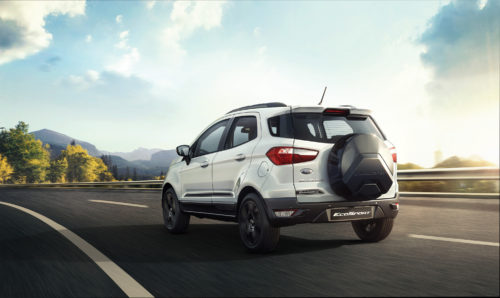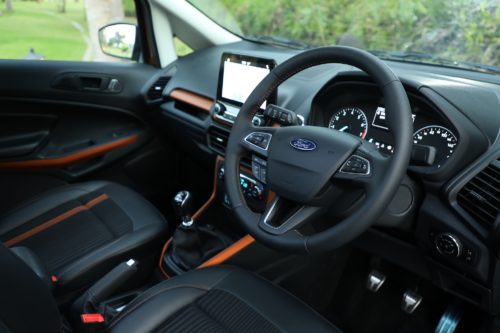Do’s & Don’ts of Teaching Your Kids to Drive
As parents, you want your child to pick driving at some point. It’s a critical life skill and teaching it at the right time when your reflexes are strong makes a whole lot of difference. If your child is of legal driving age and is eager to learn to drive, then don’t make them wait to get behind the wheel. It’s best done under your supervision.
Learning to drive does not come easily to everyone. From your own experience, you would know that it can be confusing. And when it comes to training your child, it can be even more challenging because you want to ensure they turn into the best possible drivers. So, here are some tips to help smoothen out practice sessions and enable them to learn quicker.
Picking the Right Car

It all starts with picking the right car, based on your kid’s preference. While you can use your existing car to teach your them how to drive, if you eventually want to buy them one, you might as well pick a car that suits their needs the best.
However, picking the right car for them can be a bit tricky. Doting parents, which most of you are, often give into the pressure of picking a car that their child likes, without any due diligence on how safe or practical it may be for young drivers.
You must steer them in the right direction. And to do that, here’s some advice from Driving Ford that’ll not only help you pick the right car that is an equally convincing option for your child too. Read our blog here.
Dressing for the Occasion

Like most other skills, you need to make sure your child dresses appropriately when learning to drive.
Since driving lessons can last a few hours, make sure they are wearing comfortable clothes that make free movement of hands and legs easy. Wearing casual clothing, such as straight pants or comfortable cargoes, shorts etc. work better than restrictive clothing like tight shirts and skinny jeans. Such tight clothing should be avoided as they could restrict free movements of your hands and leg and compromise reaction. Frilled skirts, or anything that can potentially get stuck between the driver’s foot and pedals, is an absolute no.
Footwear is another important aspect that needs to be taken care of while taking driving lessons. Flip-flops, sandals, open-toe shoes or high-heels can compromise pedal grip as your foot can slip out them with relative ease. Such a situation can be potentially dangerous for you and others on the road.
Trust Your Child

The fact that you’re deciding to teach them to drive means that you trust their ability to handle your car. So, while going on practice drives with them, don’t express doubt, disappointment. Discouraging words may make them more anxious than they already are. Be supportive and reassuring by letting them learn at their own pace. Let them know you trust their judgement so that they can trust themselves.
Ford Figo is a perfect car that can make learning to drive easy for newbies, not only because it’s compact and easy to manoeuvre, but because of different convenience features it offers.
For instance, the Electric Power Assisted Steering enables responsive and light steering effort at low speeds during parking or while driving through congested roads. And heavier steering at high speed to achieve better stability when on highways. It also includes a Rearview Camera that turns on automatically when you start to reverse. This can make it extremely easy for your child to get the hang of reversing and parking.
Follow the Rules

This doesn’t apply to only following traffic rules. When you are learning, or teaching someone how to drive, there are certain other rules that you simply should not overlook if you don’t want to get entangled in unpleasant situations. For starters, stick an ‘L’ board on the front and rear windshield of the car.
People on the road can sometimes be rash and impatient. This will indicate to motorists or pedestrians that your child is learning to drive, and they will give way, maintain distance, without the constant pressure of honks. Besides, if your child has only a learner’s license, then having an ‘L’ board is a government norm. In addition to this, if your child drives slowly or still learning how to navigate main roads, stick to the left side of the road and turn on the blinkers to alert oncoming traffic.
Here’s a ready reckoner to know what each of the road signs mean:
Early Morning Practice Sessions

There are two main reasons for this; first, if you are amongst those who are working from home, this will let you spend adequate time teaching your kid to drive without it affecting your work-day. Second, traffic tends to be is sparse early in the morning, and empty roads will allow your child to get the hang of driving and parking without getting overwhelmed by too many vehicles.
Sometimes, visibility can be a problem, especially during monsoon months and in some areas, it can still be a bit dark at 6 am or 6.30 am. Of course, you will not have to worry about this with the Ford EcoSport’s automatic headlamps, which turn on automatically to help you navigate through dark roads safely.
Alternatively, if you begin your day early in the morning, you can choose to teach your child later in the evening, once peak traffic reduces. This can help them become accustomed to night-time driving and boost confidence. The Ford EcoSport can make these drives safe, with features like the auto-dimming mirror, which reduces glare from tailgaters. It also has ambient footwell lighting that can throw a little light in the cabin, if your child is nervous about driving in complete darkness.
Go Beyond ‘Driving’ Lessons

While your child doesn’t need an in-depth technical know-how, lessons on how to change a wheel in case of a puncture, and how to check and top up essential oils etc. should not be missed. A car manual usually has a wealth of information about the car. So, spend some time going through the manual together. Knowing a car in and out can go along and prepare your child for unwarranted situations.
Some cars, like the Ford Endeavour, make this easier as they come with ample features like the Tyre Pressure Monitoring System and Engine Oil Warning Lamp to enable the smooth maintenance and functions of the car to avoid sudden glitches.
In fact, the entire 2020 Ford model lineup, irrespective of the variant you choose, comes with a first-of-its-kind connectivity solution, FordPass. Through a smartphone app, your car communicates with you real-time to give you updates on things like fuel level, oil life, tyre pressure and general health status, which can make them more responsible when it comes to vehicle maintenance. Also, teach them to look out for strange sounds, vibrations, jerks, etc., as this, too, is an integral part of driving.
Avoiding Distractions & Confrontations

Distracted driving, whether it’s from using mobile phones, playing loud music or simple conversations, is the biggest cause of road accidents in India. What’s even more worrying is that a recent Ford survey revealed that a whopping 42% of Indian drivers couldn’t resist the temptation of using mobile phones while driving.
To prevent road mishaps, it is essential to avoid all kinds of distractions while driving, including any confrontation.
So, make sure your child develops this habit right from the beginning. Apart from putting away their phone, it would be prudent to ensure they don’t listen to music while learning how to drive or until they are confident and capable, as it could hamper their focus on the road.
Nonetheless, once they master driving, with Ford’s infotainment system, they will be able to manage calls, music, navigation, and other tasks without taking their eyes off the road. How? Well, the system connects with phones and allows drivers to manage various functions such as making phone calls, play the radio with mere voice commands. Ford cars offer many more convenience features to keep you prepared for eventualities on the road, such as rain sensing wipers, voice-guided navigation among others that will keep distractions away by removing the need to fiddle with switches.

Since driving can be stressful, especially when you are new to it, don’t add to their emotions by having arguments or discussing tense topics like their grades, career, or relationships. Having a tiff with them in the middle of the road can distract them and be dangerous for the two of you and others on the road. So, keep your cool and address sticky conversations or situations once you are off the road. As a parent, you must also be patient and control your reactions. Avoid yelling or scolding them while they are learning to drive, as it could affect their mindset and confidence.
To make driving convenient for children who might consider manual shifts a distraction, you should consider an Automatic car. Automatics come with their advantages like lesser peddle effort in bumper to bumper traffic or cruising on highways.
Ford offers both, automatic and manual transmission options on Ford EcoSport. The company recently introduced a value-rich, Titanium variant EcoSport AT to ensure many more people can benefit from the technology. You will soon have upgraded and more refined automatic options with Ford Figo and Ford Aspire too.
Discuss What They Learn

A quiz at the end of the driving session that incorporates everything your child learned that day would help them retain the information. You can ask questions on changing the gears, stopping at signals, traffic signs, etc. It does not have to be a strict quiz; it can merely be part of your casual conversation. This will help you gauge how much they know about driving and how well.
Driving is no rocket science; you need practice and confidence. And some new drivers might take slightly longer than others to pick up this life skill. So as a parent, always be supportive and patient with your child’s driving lessons.
Subscribe to our newsletter
Subscribe to our newsletter to stay upto date with latest news, offers and much more



